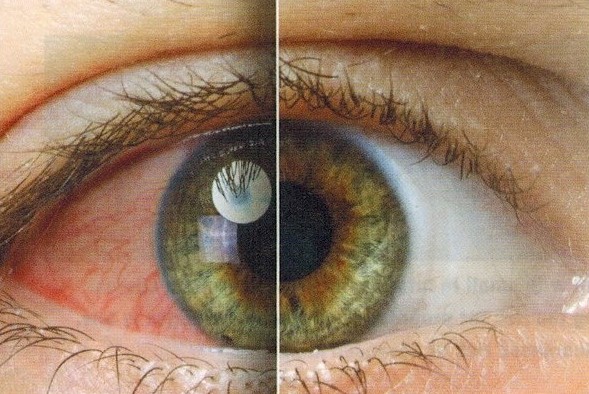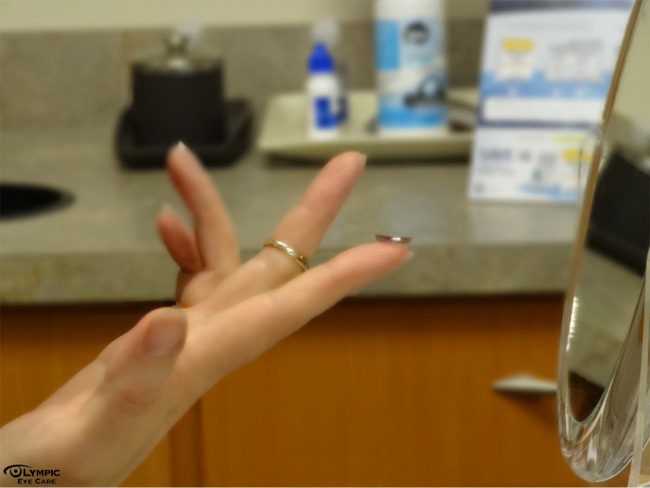Eye Care Services - Eye Disease Management
Olympic Eye Care Services
Home > Eye Care Services > Eye Disease ManagementSome of the most common eye diseases diagnosed and often treated at Olympic Eye Care.
CONJUNCTIVITIS
(Also known as pink eye) Is an infection or inflammation of the conjunctiva - the thin protective membrane that covers the surface of the eyeball and inner surface of the eyelids. CAUSED by bacteria, viruses, allergens and other irritants like smoke and dust. Pink eye is highly contagious and is usually accompanied by redness in the white of the eye, increased tearing and at times discharge.
While many minor cases improve within 2 weeks, some can develop into serious corneal inflammation and threaten sight. If you suspect pink eye, call for an exam and treatment ASAP.
DIABETIC EYE DISEASE
Diabetic eye disease is a general term for a group of eye problems that can result from having type 1 or type 2 diabetes, including diabetic retinopathy, cataracts and glaucoma.
Often there are no symptoms in the early stages of diabetic eye disease, so it is important that you don't wait for symptoms to appear before having a comprehensive eye exam. Early detection and treatment of diabetic eye disease will dramatically reduce your chances of permanent vision loss.
GLAUCOMA
Often called 'the silent thief of sight'. Glaucoma is an increase in the intraocular pressure of the eyes, which causes damage to the optic nerve with no signs or symptoms in the early stages of the disease. If left untreated, glaucoma can lead to a decrease in peripheral vision and eventually blindness.
While there is no cure for glaucoma, there are medications and surgery available that can help halt further vision loss. Early detection and regular eye exams are vital to slowing the progress of the disease.
DRY EYE SYNDROME
Dry eye syndrome refers to the breakdown in the quantity or quality of tears to moisten, cleanse and protect the eyes. This is significant because, with each blink, tears protect the surface of the eye, washing away dust and microorganisms. When this protective coating dries up, the eye may feel 'gritty' or burn, can be sensitive to light and may cause blurry vision. If you blink and sometimes your vision gets clearer than other times, there is a good chance you are affected by dry eyes. Unfortunately today with unavoidable screen time in our everyday life, when we are staring at a screen, we do not blink. Making dry eye syndrome more apparent in our lives then ever before.
If you suspect you have dry eyes, call for an exam. Proper care will not only increase your comfort, it will protect your eyes.
CATARACTS
A cataract is a clouding of the eye's normally clear lens, which leads to progressive blurry or dimming of vision. It's the world's leading cause of blindness and among the most common conditions related to aging.
A cataract starts out small and initially has little or no effect on vision. As the cataract progresses, it becomes harder to read and perform other normal tasks. In the early stages, your doctor may recommend stronger eyeglasses and adjusting your lighting to reduce glare. When cataracts disrupt your daily life, your doctor may recommend cataract removal surgery. This is one of the most frequent and successful procedures done in the U.S.
MACULAR DEGENERATION
Macular degeneration is a chronic progressive disease that gradually destroys sharp central vision due to deterioration of the macula, a tiny spot in the central portion of your retina comprised of millions of light-sensing cells. Because it is so commonly associated with aging, it is also known as age-related macular degeneration. There are two forms: Dry which is most common and with no known treatment, and Wet less common and treated with Laser procedures.
In some cases, reversing damage caused by Macular degeneration is not possible. However supplements, protection from sunlight, eating a balanced diet and quitting smoking can reduce the risk and progression
of macular degeneration.
BLEPHARITIS
Blepharitis is a general term for inflammation of the eyelid and eyelashes. It is among the most common and stubborn eye conditions usually resulting from poor hygiene, a low-grade bacterial infection, an allergic reaction or abnormalities in the oil gland function.





